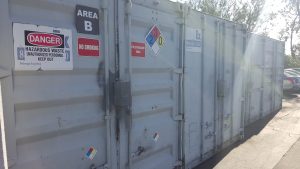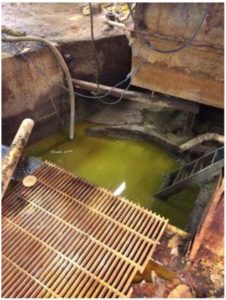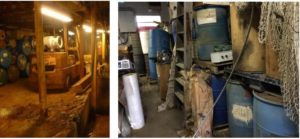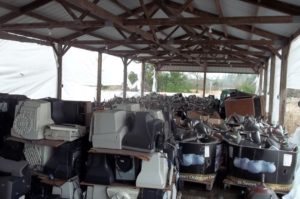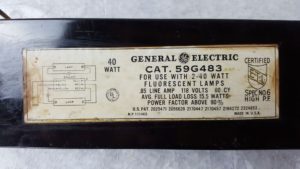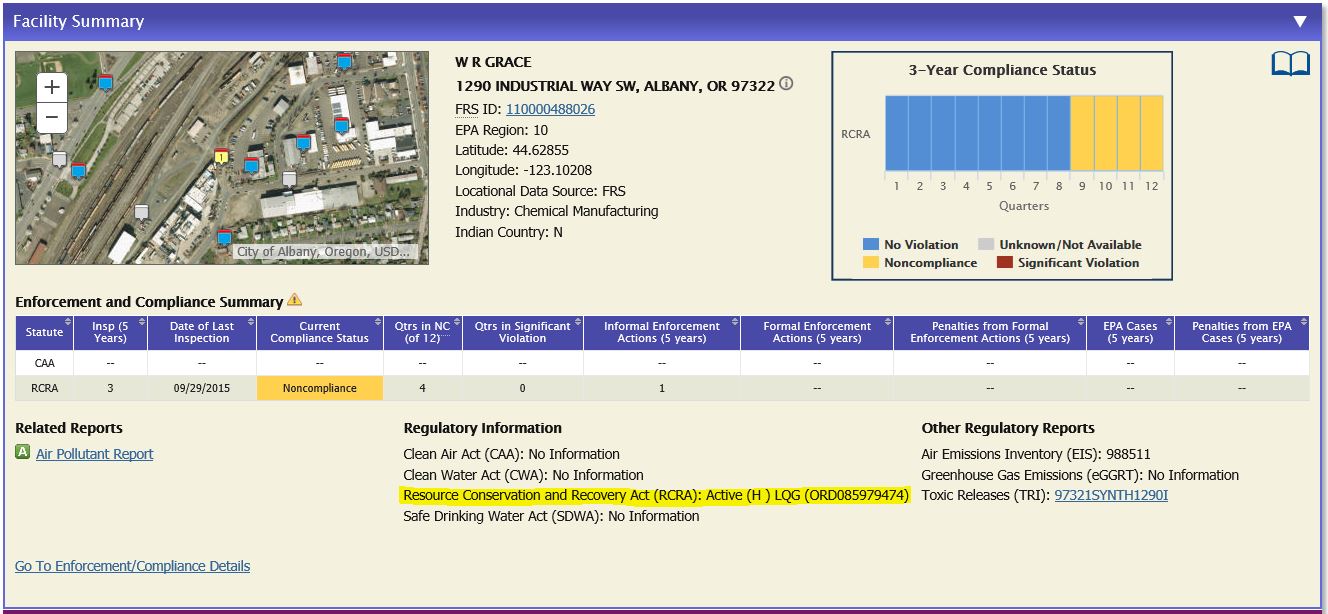The regulations of the U.S. Environmental Protection Agency (USEPA) promulgated under the Resource Conservation and Recovery Act (RCRA) allow generators of hazardous waste to be exempt from many of the requirements applicable to a permitted or interim status treatment, storage, or disposal facility for hazardous waste (TSDF). To maintain this exemption, generators must comply with the regulations applicable to their generator category. One of those regulatory requirements for exemption is to conduct weekly inspections of hazardous waste containers at their facility.
The purpose of this article is to identify and describe the responsibilities of hazardous waste generators to conduct weekly inspections of hazardous waste containers in central accumulation areas.
Before we begin…
While the content of these regulations were not changed by the Generator Improvements Rule, their location was. Prior to the reorganization of USEPA regulations in the Generator Improvements Rule, the weekly inspection regulations were found at 40 CFR 265.174 referenced there by §262.34(b) for a large quantity generator of hazardous waste (LQG) and §262.34(d)(2) for a and small quantity generator of hazardous waste (SQG). After the Generator Improvements Rule the regulations are now found as indicated below:
- 40 CFR 262.16(b)(2)(iv) for SQG
- 40 CFR 262.17(a)(1)(v) for LQG
Not sure of your hazardous waste generator category? |
Scope and Applicability:
- The weekly inspections described in this article are required for both the large quantity generator of hazardous waste (LQG) at 40 CFR 262.17(a)(1)(v) and small quantity generator (SQG) at 40 CFR 262.16(b)(2)(iv). Weekly inspections are not required for a very small quantity generator of hazardous waste (VSQG). A VSQG may wish to consider some form of periodic inspections of its accumulated hazardous waste.
- It is only hazardous waste that requires inspections. None of the following waste require inspections of any kind:
- Universal waste
- Used oil
- Non-hazardous waste
- This article will only address the inspection requirements for hazardous waste accumulated in containers. Other accumulation units at a hazardous waste generator: tanks, drip pads, and containment buildings, will not be addressed. A container is defined at 40 CFR 260.10 as: any portable device in which a material is stored, transported, treated, disposed of, or otherwise handled. Thus it could include anything from a test tube to a 500-gallon portable tank to a 5,000-gallon tank mounted on a transport vehicle.
- Weekly inspections are required only for hazardous waste containers in a central accumulation area (CAA). Hazardous waste containers in a satellite accumulation area (SAA) are not subject to inspection requirements.
- This article will only address the Federal regulations of the USEPA. If your state has an authorized hazardous waste program its inspection requirements may be more stringent and more broad than the Federal.
Like this article? Subscribe to my Monthly Newsletter No marketing emails! |
The text of the regulations:
40 CFR 262.16(b)(2)(iv) for SQG reads:
Inspections. At least weekly, the small quantity generator must inspect central accumulation areas. The small quantity generator must look for leaking containers and for deterioration of containers caused by corrosion or other factors. See paragraph (b)(2)(i) of this section for remedial action required if deterioration or leaks are detected.
40 CFR 262.16(a)(1)(v) for LQG reads:
Inspections. At least weekly, the large quantity generator must inspect central accumulation areas. The large quantity generator must look for leaking containers and for deterioration of containers caused by corrosion or other factors. See paragraph (a)(1)(ii) of this section for remedial action required if deterioration or leaks are detected.
What is weekly?
USEPA does not define what its use of the term weekly means; it has left the clarification of its meaning to the individual states. However, based on my experience, it is safe to assume that this does not mean once per calendar week, but rather every seven days. In other words, if you complete a weekly inspection on Wednesday December 21st and the next week on Thursday December 29th, eight days separate the inspections and you may have committed a violation. (Completing the 2nd inspection or or before the 28th would be within seven days and be in compliance). Also, the regulations do not say anything about suspending the requirement during facility shut-downs (either planned or unplanned). Therefore, the weekly inspections must be completed even when you are shut-down for the holidays or maintenance if hazardous waste remains in a CAA.
Contact me with any questions you may have about the generation, identification, management, and disposal of hazardous waste Daniels Training Services, Inc. 815.821.1550 |
What areas are to be inspected?
The inspections are only to be of containers in a central accumulation area as the regulations clearly state. It does not apply to containers in a satellite accumulation area. The term central accumulation area was created by the Generator Improvements Rule as a matter of convenience by USEPA. It replaced a variety of other terms that had been used over the years. It simply refers to the area of the facility – LQG or SQG – where hazardous waste accumulates subject to the full regulations of the respective generator category. Read: FAQ: What is the central accumulation area?
What is the inspection looking for?
The sole purpose of the inspection is to look for:
- Leaking containers.
- Deterioration of containers caused by corrosion or other factors.
…and that’s it.
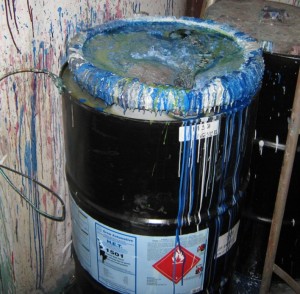
However, the following items may also be included in a weekly inspection of hazardous waste containers in a central accumulation area:
- Container labeling.
- Containers closed properly.
- High liquid level or overflow of container.
- Container structurally intact.
- Wheels, if present, properly braked/chocked (remember: a 30,000 gallon rail tank car meets the definition of a container).
- Containers located so as to minimize potential for puncture or release.
- CAA pad, if present, free of chips, cracks, &etc.
- Sump pump, if necessary, operative.
- Check the date of initial accumulation to ensure sufficient time for on-site accumulation.
Also, the regulations of your state may be more stringent than those of the USEPA. It is possible state regulations may require some, or all, of the above recommendations; and may require even more.
What if leaks or deterioration are detected?
If leaks or deterioration of containers are detected during the weekly inspection, both SQG and LQG are referred to their respective remedial action regulations – §262.17(a)(1)(ii) for LQG and §262.16(b)(2)(i) for SQG. Response requirements are:
- Immediately transfer the hazardous waste to a container in good condition.
Or…
- Immediately manage the waste in some other way in compliance with the regulations of their generator category.
So, clearly the generator is required to immediately respond to correct leaking containers or signs of deterioration that may lead to a leak.
Interested in a Webinar that covers this topic, and more! |
Is it necessary to document the inspection and keep a copy as a record?
Nope. Surprisingly, USEPA regulations do not require the weekly inspections to be documented nor does it have any recordkeeping requirements. However, it may be difficult to prove to an inspection (state or Federal) you are completing the inspections without some record to show for it. Therefore, as a best management practice it is recommended the LQG or SQG maintain a form that keeps a record of the following at a minimum:
- Date and time of inspection.
- Name of inspector.
- Notation of observations made.
- Date and nature of remedial actions if necessary.
Remember: USEPA proposed under the Generator Improvements Rule to require documentation of weekly inspections at a SQG or LQG but it did not adopt this proposal. Read: The Generator Improvements Rule and Weekly Inspections of Hazardous Waste Accumulation Units
Also, your state may be more stringent than USEPA regulations. It may require weekly inspections to be documented and may require even more than what is recommended above.
Conclusion:
Done weekly as required (some hazardous waste generators conduct bi-weekly inspections) and done correctly (don’t let it just be a “pencil-whipping exercise”) inspections of hazardous waste containers in a central accumulation area can help you to maintain compliance with the RCRA regulations at your facility.
Daniels Training Services, Inc. 815.821.1550 |

